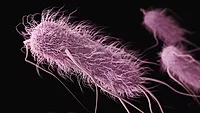AMR, WGS Food Safety Developments in UK

Credit: ANIRUDH (lanirudhreddy) via Unsplash
The UK Animal and Plant Health Agency (APHA) recently published a review of its scientific accomplishments throughout 2021. The report highlights certain developments that impact food safety regarding whole genome sequencing (WGS) and antimicrobial resistance (AMR).
APHA has reported an ongoing transition from conventional serotyping to WGS-based typing of Salmonella. In a single test, the new pipeline can differentiate between wild Salmonella isolates and live vaccine strains that are licensed in the UK for use in poultry and pigs. A full-throughput parallel trial was successfully completed, and preparations for launching the new WGS-based serotyping service are underway. WGS for Salmonella aligns with testing of human and food isolates by public health authorities in England and Scotland, and by the European Salmonella Reference Laboratory. APHA states that WGS is being used to detect outbreaks in real time, and the agency predicts that WGS could replace most AMR testing, phage typing, and molecular testing in the future.
Regarding AMR, transferable resistance to the antibiotic tigecycline in bacteria from livestock has been reported by APHA for the first time. Tigecycline, which is not authorized for use in livestock, is a last-resort, critically important antimicrobial that is used to treat multidrug-resistant bacterial infections in humans.
Additionally, a new scheme has been implemented to monitor the antibiotic susceptibility of key veterinary bacterial pathogens in food animals. The scheme is intended to provide quality, robust AMR data for veterinary pathogens against commonly used antibiotics, improving the usefulness of surveillance.
APHA has also been involved with a range of outbreak investigations related to Salmonella. Specifically, APHA has investigated Salmonella infections in dogs related to livestock and raw meat pet food, and human outbreaks related to several strains of S. Typhimurium originating from cattle and sheep. Additionally, Salmonella in dogs was made reportable to address surveillance gaps.
Looking for quick answers on food safety topics?
Try Ask FSM, our new smart AI search tool.
Ask FSM →









